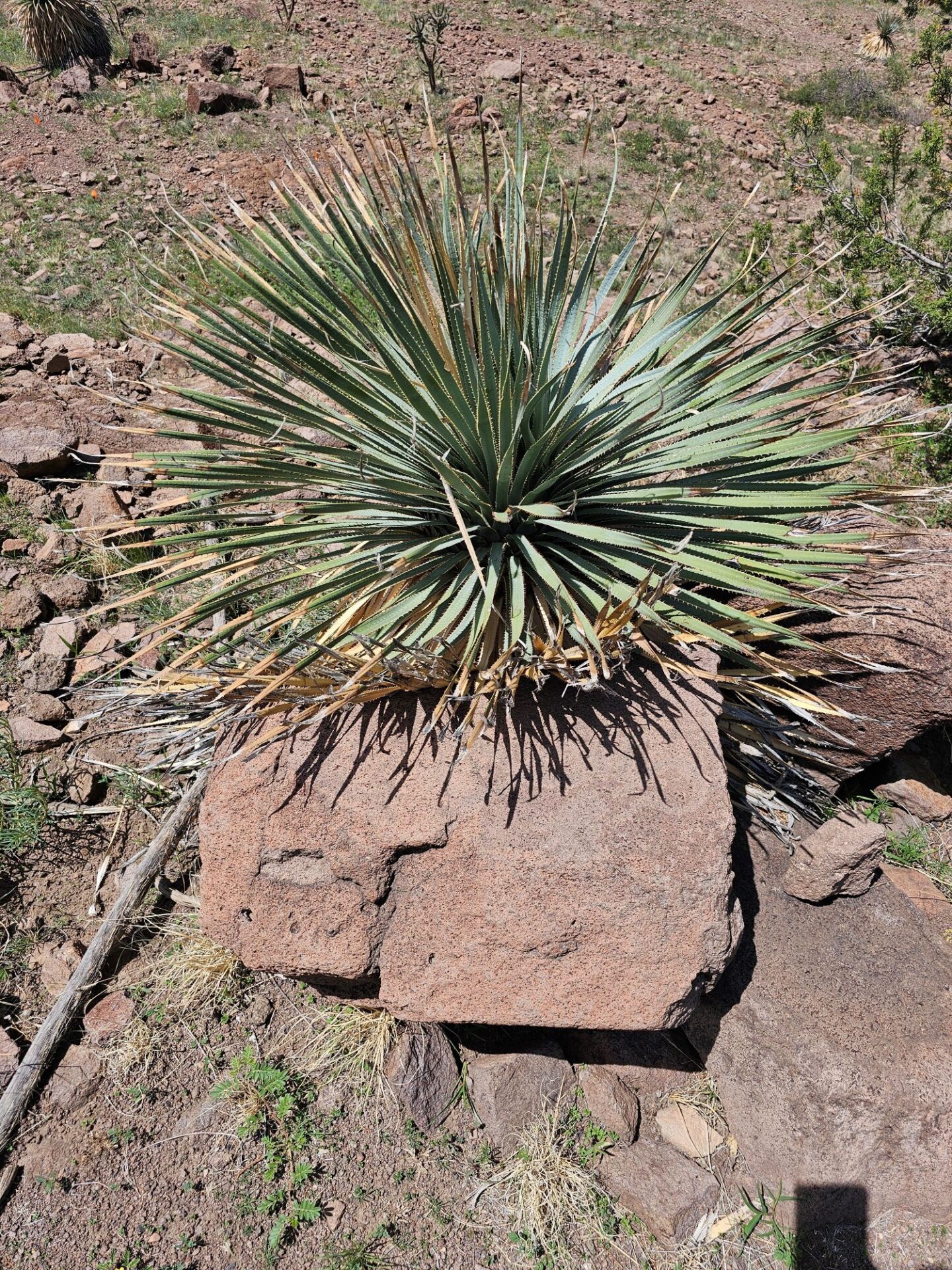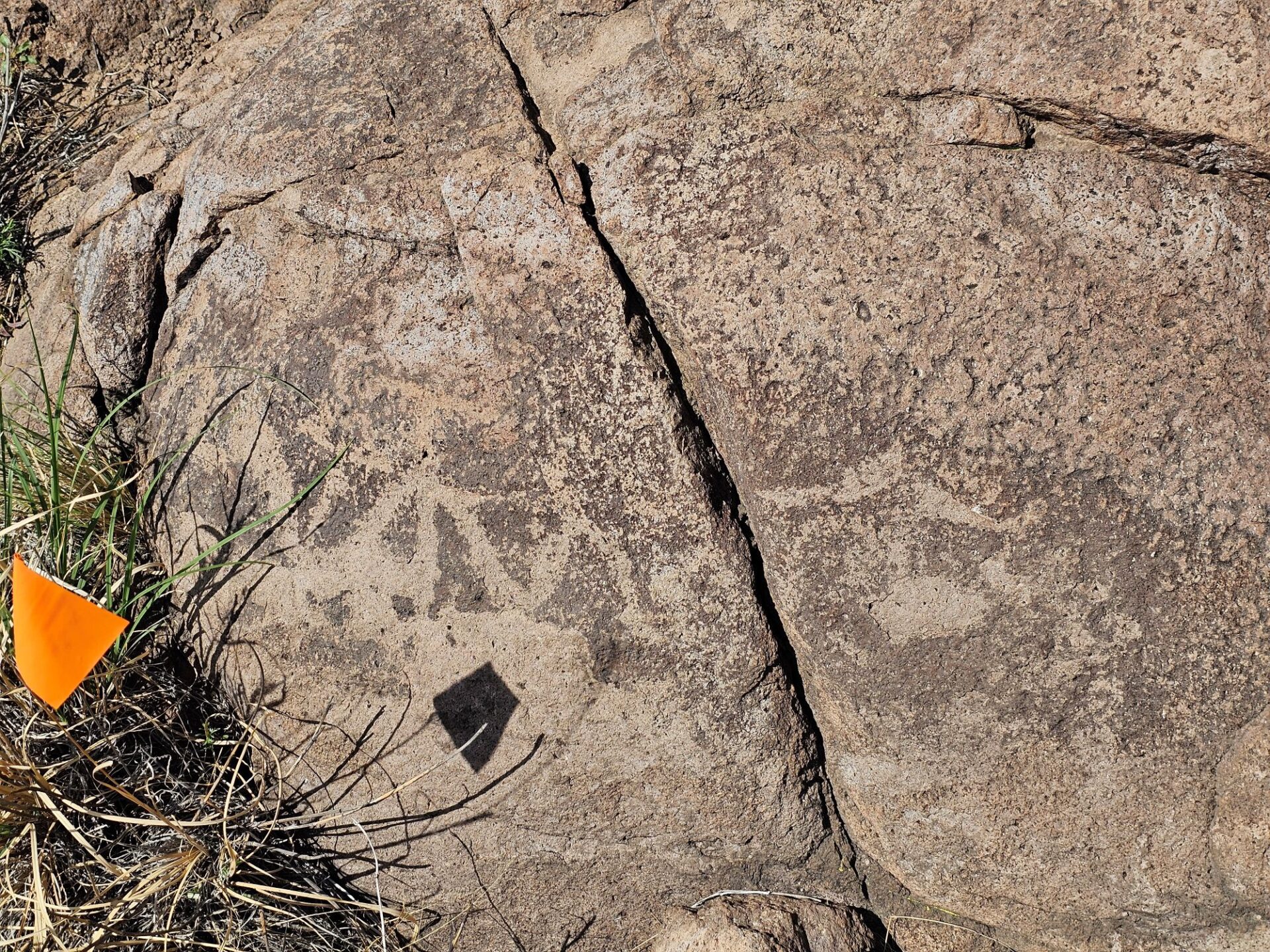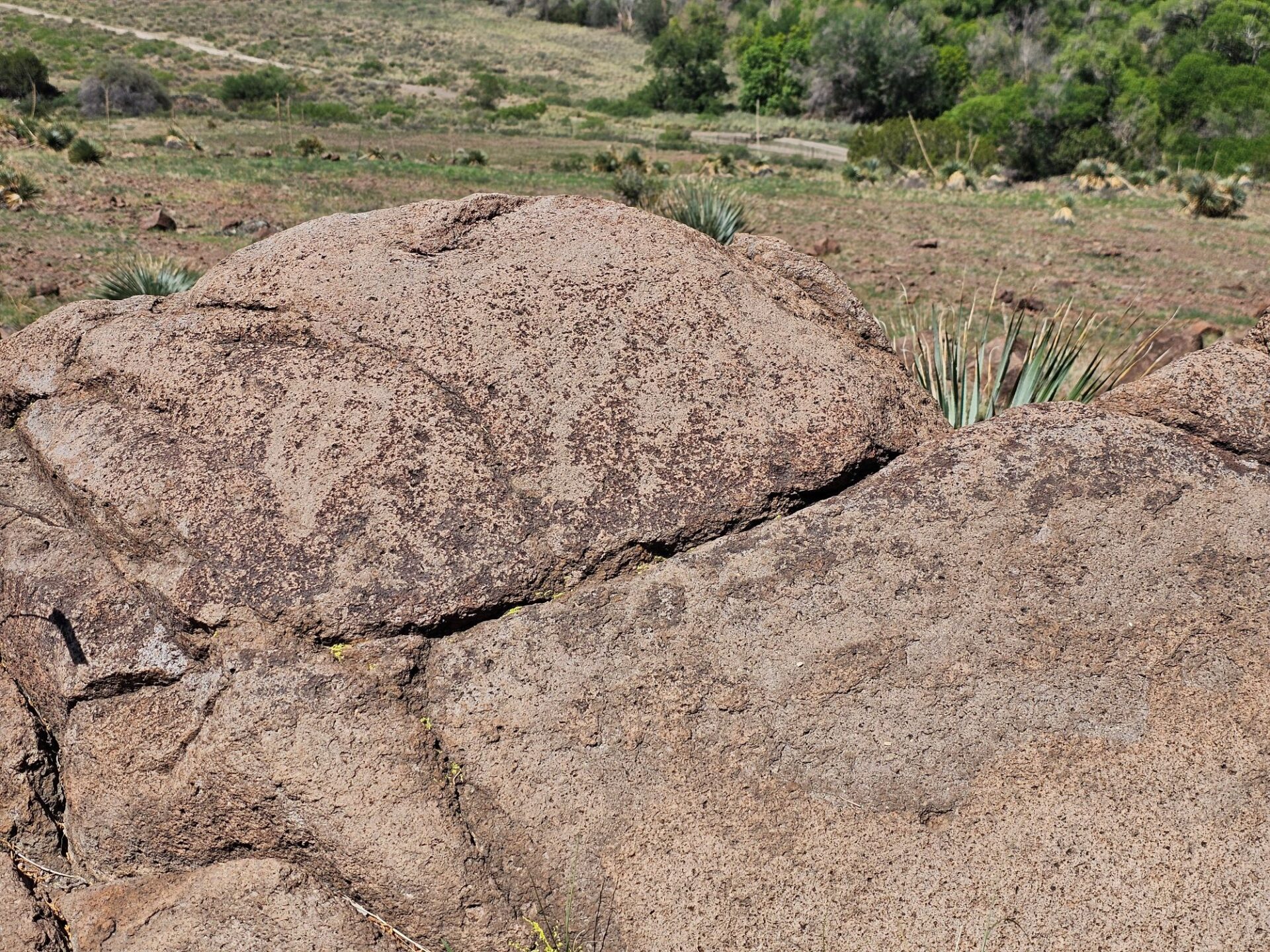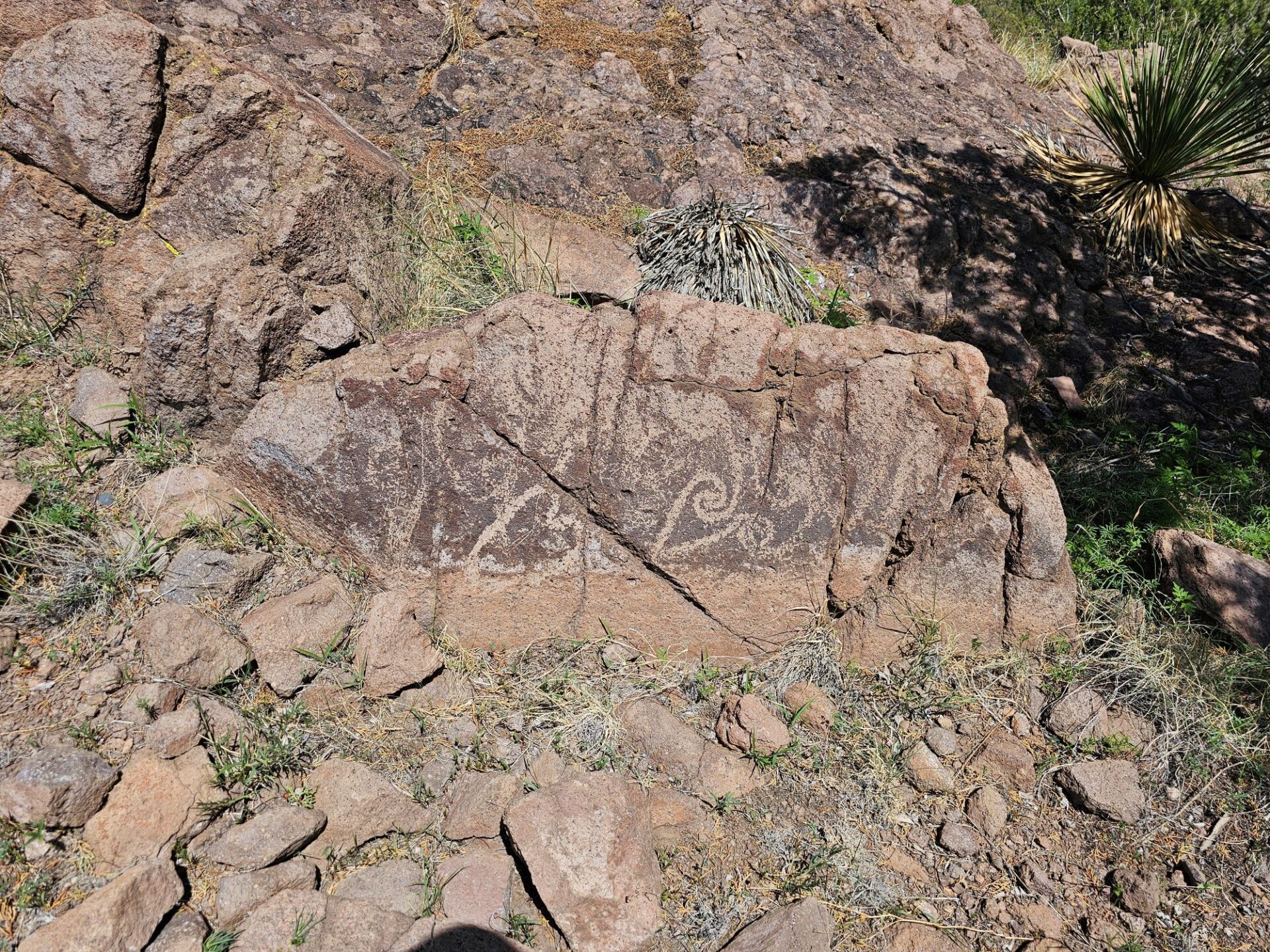- Home
- >
- Preservation Archaeology Blog
- >
- From the Field School: The Gift of Finding
(July 29, 2025)—Searching for Mimbres rock art at NAN Ranch on a scorching 91-degree day with an extreme UV index of 13 presented a challenging but ultimately rewarding experience. The landscape, a typical Southwestern New Mexico high desert shrubland, featured loose, rocky terrain, yucca plants, and scrub bushes, with only scattered juniper trees offering respite from the sun. My task was to find three elusive panels of rock imagery. I was told that I had the gift of finding the faded, weathered images that were pecked onto the varnished rock faces that were hundreds of years old.

It was tough! I found one panel in a matter of minutes; it was small and consisted of a hand and several geometric shapes. Yucca leaves were growing beside the rock panel and concealing it among its shadows. I found the second panel a dozen moments later. This panel was very worn and faded by the hard sunlight. The camera shows the image better than what I saw with my eyes—it contained more geometric designs.

About an hour later, I was excited to find the last panel, right where my fellow student and instructor had been resting under the cool shade of a juniper tree. They sat by the rock imagery and did not notice it! It was the biggest panel of all and was located at the highest point on the hill.
There was a pattern developing: All the rock panels were facing northeast. This rock panel was on a huge boulder and consisted of what appeared to be an animal face, more geometric designs, and an image of a margarita cup! I might have been suffering from heat exhaustion by this time, but I kept seeing that margarita cup in the geometric designs. After all, it was a brutal clear, hot day in the high desert shrub lands of southwest New Mexico.

While celebrating my accomplishments in the cool shade of a juniper tree, my instructor yelled that he had found another rock panel in a location below where I was located. I quickly scrambled down over the rocky terrain and found a panel that looked completely wrong! It was facing east, and in my camera, I saw hearts, swirls, and a faint 96 scratched into the old rock face. The other rock panels were pecked into the dark varnished rock. This piece was scratched and pecked and seemed out of place.

We concluded that it was most likely “modern” rock art, but we logged the find on our paperwork. It could have been an ancient rock panel that was modernized to include hearts and numbers, to our dismay. Regardless of what looked to me like graffiti, the experience of finding potsherds, lithics, and historical artifacts in the field ignited a passion for me to continue and explore other areas that are located closer to home in Arizona. I will now be seeing more than dirt as I hike over terrain. I’m sure that flakes and ceramic potsherds will now stand out. I can’t wait to get out there and explore!
Explore the News
-
Join Today
Keep up with the latest discoveries in southwestern archaeology. Join today, and receive Archaeology Southwest Magazine, among other member benefits.